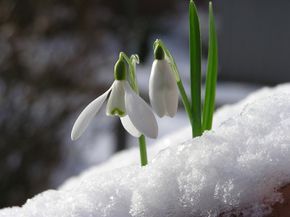Fair weather or foul, nature finds a way to create variety and interest in the garden, and winter is no exception. Whether they're blooming through a crust of snow, or showing off their vivid colors while dropping temperatures force us indoors, hardy winter flowers and plants are doing more than just surviving when the winter rolls in; they're thriving.
These garden inhabitants create interest, texture and a touch of the unexpected in the landscape when our springtime favorites are taking a long winter's nap — and they do it with style. Let's take a look at 10 plants, trees and shrubs that can transform a barren, chilly landscape into a winter wonderland. For each plant, we'll discuss what it will look like in your garden, what type of soil and water it needs, where it should be planted, and some tips and tricks to give it a chance to excel.
Advertisement
First up, the camellia.



